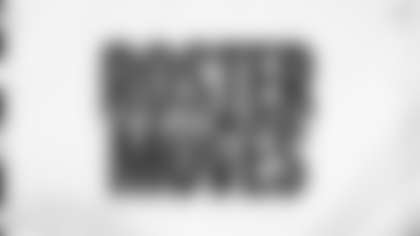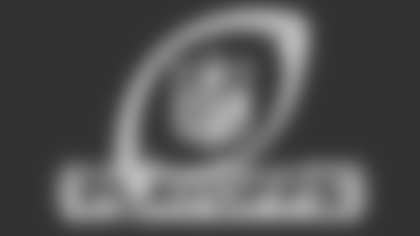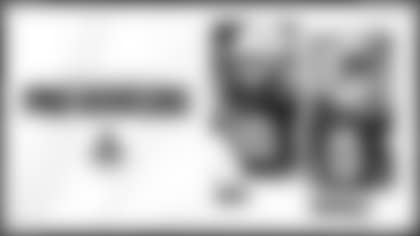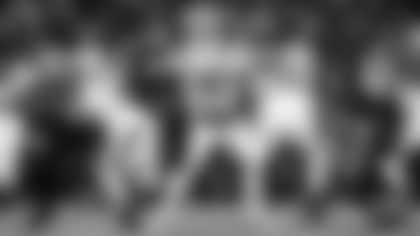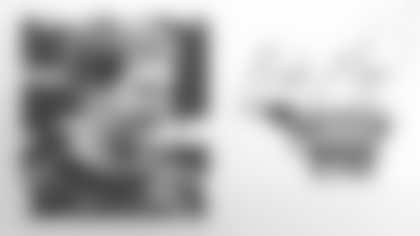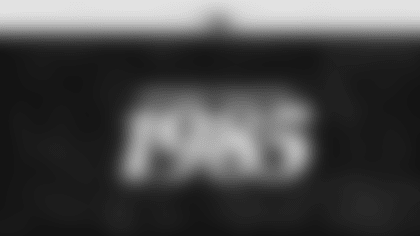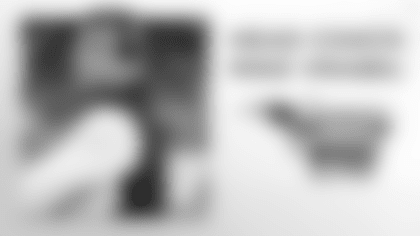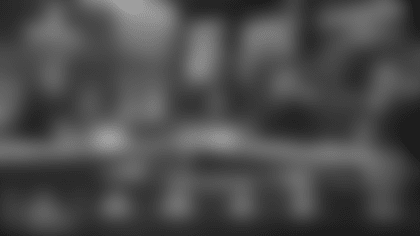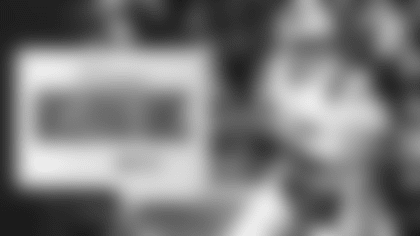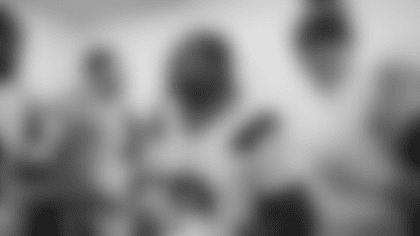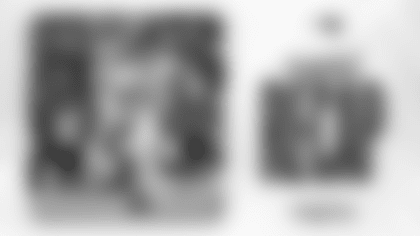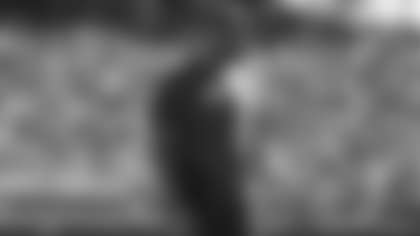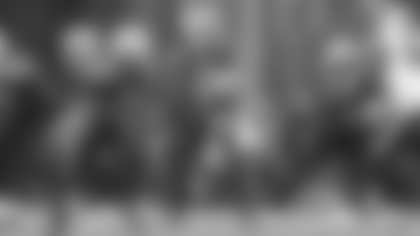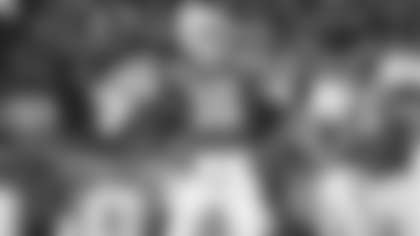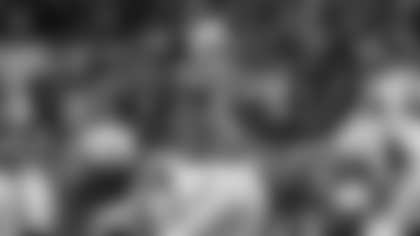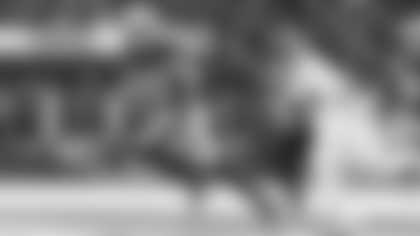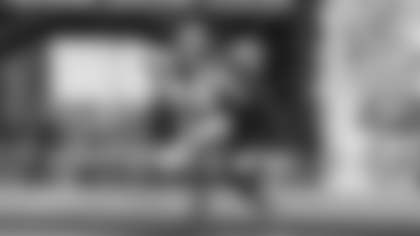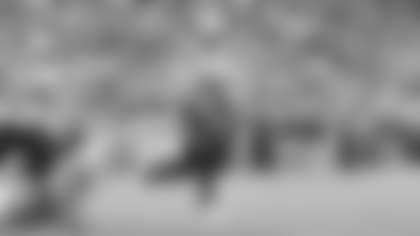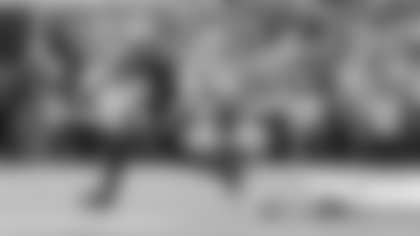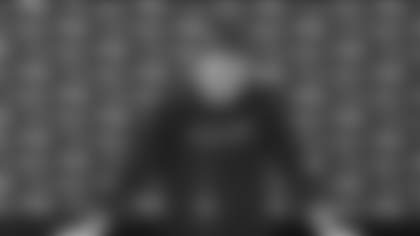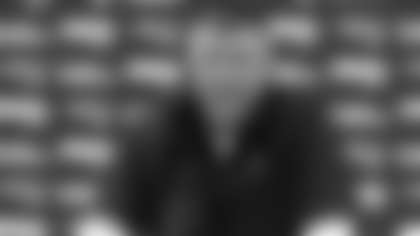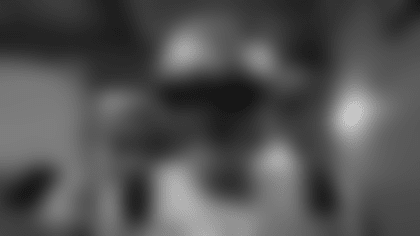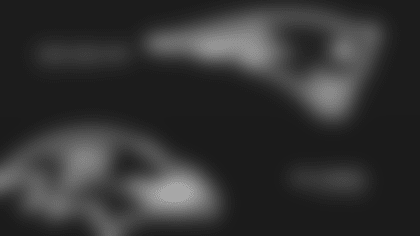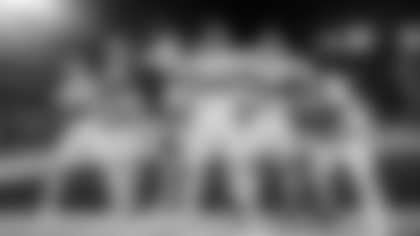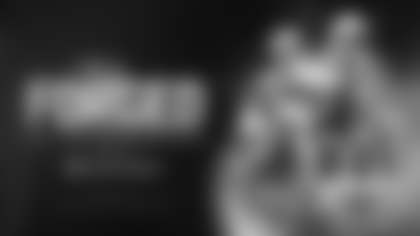After a rocky start to the season, the Patriots offense has dominated headlines with the debate about if/when rookie Drake Maye will take over at quarterback driving clicks for the local media.
Talking defense doesn't move the needle for most fans right now. The Maye discourse is more interesting, while most people want to see their favorite team light up the scoreboard. This scribe is guilty as charged for favoring analysis on the offense. Defense is cool, too, but good offense is football's version of chicks digging the long ball in baseball.
As uneven as the offense has been through four weeks, we unfortunately need to have a tough discussion about New England's slumping defense. After reviewing the tape from Sunday's loss, the defensive regression the Patriots are showing is more alarming than the offense for two reasons: 1. We expect more from the defense, and 2. Although the results were still poor, there were tiny, little baby steps offensively that we'll get to later.
Now, the defense has the excuse that it lost DT Christian Barmore (blood clots) before the season started, and losing captain Ja'Whaun Bentley (torn pec) is a massive blow. The team also traded top pass-rusher Matthew Judon to Atlanta: three pillars of this defense over the last few seasons. There's the element of always being upstream without a paddle, too. If a strong offense was complementing them, would the Patriots defense be better? Maybe. But, in recent years, they've kept their strong standing in league rankings even with a shaky offense.
They also lost the greatest defensive mind in NFL history by mutually parting ways with former head coach Bill Belichick. Mayo and DC DeMarcus Covington are Belichick disciples, but there's only one BB, and Covington is a first-time play-caller with Steve Belichick also departing. With the talent and brain drain, some in their control and some not, a slight drop-off is understandable.
The Patriots 35-year-old defensive coordinator is an up-and-comer with a bright future. Covington is known for his hands-on coaching and ability to motivate his players. Over the years, the defensive line room that has worked most closely with Covington was highly complimentary while he was beginning to get coordinator interviews elsewhere. Eventually, the Pats were either going to promote or lose Covington to another DC job, so it's not like he wasn't qualified for this position.
That said, the Patriots are experiencing some growing pains with two young defensive minds running that side of the ball. After finishing eighth last season, the Patriots defense is 25th in expected points added (EPA) through four weeks. They're 24th against the pass in EPA, an alarming 31st on third down, 27th in yards per play allowed, forced just two turnovers in four games, and 23rd in team pressure rate. Statistically, they're not a very good defense right now and are performing below expectations as the strength of the team.
Covington and Mayo could easily develop into great coaches, but it's hard to ignore that the chess matches haven't been going their way in the last three losses. Schematically, the Patriots are dialing up more cover-two zone defenses under the new regime. They've played cover two on 25.3% of their opponent's pass plays, a NextGen-era high for a Pats defense (since 2018). They're also playing less man coverage on third down, where they're allowing a conversion 51.9% of the time.
Now that it's on film, sharp play-callers like 49ers coach Kyle Shanahan have figured these changes out. On Sunday, Shanahan got the better of Covington/Mayo by forcing the Patriots into their base defense. The Pats played 58.3% of the plays in a base defense in their Week 4 loss, the highest percentage of base they've played in a game in the NextGen Era (since 2016). Without two of their best run defenders, Bentley and OLB Anfernee Jennings (shoulder), New England struggled to stop the run out of their nickel packages. The Pats allowed 81 rushing yards on 12 attempts with five DBs on the field (6.8 average) compared to 67 rushing yards on 20 attempts (3.4 average) when they played in a traditional base defense.
The Niners got the Patriots into their base defense by running at their smaller edge defender (Joshua Uche) and nickel corner (Marcus Jones). By motioning a blocker across the formation at the snap, San Francisco gets a double-team on Uche while WR Jauan Jennings (6-3, 215) blocks Jones (5-8, 175) on this toss scheme. Eventually, S Jabrill Peppers lays a good stick on ball carrier Deebo Samuel by filling from depth, but the run still gains eight yards on 1st-and-10, which is a win for the offense.
New England's counter to San Fran's early rushing success was to put another linebacker on the field. The Pats stopped the run when they were in base, using a 6-1 front that Belichick popularized in Super Bowl 53 and a more traditional 5-2 front to shut down outside zone schemes. Although it solved one issue, it created another problem. Once the Patriots answered the 49ers early-down offense with heavier personnel, Shanahan had his left hook ready, pivoting to pass plays.
The Niners generated five passes of 20-plus yards against New England's base defense, with QB Brock Purdy averaging 18.1 yards per attempt. The 49ers ran dagger variations into the Patriots zone coverage structures.
Since the Pats have heavy personnel on the field, LB Jahlani Tavai is tasked with making the vertical seam drop between the two deep safeties in a cover two scheme above. The Niners use counter-action to get the linebackers in conflict, and then Tavai has to drop out of the run fit following play-action and locate Brandon Aiyuk's crosser. That's a very challenging assignment for any defender, let alone a 250-pound linebacker, and Aiyuk gets loose for a 38-yard chunk gain.
Along with allowing early-down explosives, the Patriots leaning into more split-safety structures on third down also burned them on Sunday. The Pats are playing two-high safeties on 39.1% of their third down plays, another NextGen era high for New England. The issue with playing split-safety coverages is that you need to get home with a four-man rush, and there isn't an extra defender near the line of scrimmage to account for the quarterback. As a result, they're also allowing +0.35 EPA per extended drop-back this season, the second-most in the NFL.
Extended drop-backs are when the time to throw is over four seconds. With the Pats dropping into more two-high coverages, they're losing contain on the QB. Under Belichick, New England majored in man coverage with five-man rushes on third down (5-0). The Pats would often rush four with a fifth defender essentially serving as a QB spy. As you can see, the spy (Mack Wilson) was there to keep the quarterback in the pocket, allowing the pass rushers to run line stunts and other games with their best rushes to apply pressure.
This season, these aggressive four-man rushes on third down without any low help (robber/spy) are inviting quarterbacks to leave the pocket and extend plays. Here, the Pats appear to be in a cover-two (man) coverage and run a T/E stunt over the left side of the offensive line. The initial coverage is good. But the stunt fails to close the pocket, so Purdy extends the play and eventually finds TE George Kittle to convert.
As mentioned, the Patriots have the second-worst third-down defense in football through four games. Failing to get off the field on third down is killing them, and many of those conversions are on extended drop-backs like the one above. On Sunday, the early-down explosives were also a huge problem as Shanahan got the matchups he wanted.
There's still defensive talent on this roster: Keion White, Christian Gonzalez, Jabrill Peppers, Kyle Dugger, and solid role players (Godchaux, Wise, Tavai, Jennings, etc.). It's never all about the coaching, but every staff wants to put their own spin on things, and Covington and Mayo's flavoring hasn't worked since they put it on film in Week 1. Eventually, they'll need to adjust.
Here's a full break down on the Patriots offense and quick-hit film notes from the loss to the 49ers After Further Review:
Reviewing the Patriots Offense: QB Jacoby Brissett's Audio Breakdown
The Patriots offense had another lackluster performance against the 49ers on Sunday. Full stop. It's not good offensive football right now.
As a team, the Patriots are dead-last in the NFL in passing yards per game (112.3), while Brissett is 29th among 33 qualified quarterbacks in EPA per drop-back (-0.14) and 23rd in drop-back success rate (43.5%). The Pats current QB1 also threw his first interception of the season in San Francisco, a stare-down job that led stud LB Fred Warner right to WR Tyquan Thornton's route for a pick-six. Plus, Brissett remains the most pressured quarterback in the NFL (47.2%).
Like most, my initial impression after watching the game live was that this was another epic disaster offensively, and in some ways, it was. The pressure rate was still insane (48.7%), Brissett had moments where he made it worse, and 168 yards through the air is 168 yards through the air. Let's also not forget that 50 of those yards came on a garbage-time coverage bust where the 49ers didn't cover RB Antonio Gibson. Yup, not good.
At this point, nobody fears the Patriots passing game, and the stats back that up. New England is facing the most single-high defensive structures (51.1%), the fifth-highest man coverage rate (38.2%), and the fourth-lowest average safety depth (11.3). Pats receivers are given 5.3 yards of cushion compared to the league average of 6.2: stack the box, crowd the line of scrimmage, and dare the Patriots to beat you downfield. Is that enough of telling you how bad it is before being sunshine.com?
Although it's a very low bar, I came away from watching the Patriots offensive film somewhat encouraged. Mainly, offensive coordinator Alex Van Pelt had a much better plan this week to manage the offensive line. Van Pelt ditched the long under-center designs for quicker drops, with Brissett attempting a season-high 16 quick drop-backs (under 2.5 seconds). They also moved the pocket effectively, chipped and slid protection toward backup LT Trey Jacobs, and when they tried taking a shot, they put six offensive linemen on the field while sending only three receivers into the pattern. Van Pelt did his best to scheme around some glaring deficiencies. There wasn't much else he could do, really.
The other encouraging sign was that the Patriots receivers were getting open against the Niners secondary. The Patriots hit on some of those quick-game concepts, and pass-catchers Hunter Henry, Ja'Lynn Polk, and DeMario Douglas flashed some separation ability. Brissett took six sacks, and some of those were his own doing, but he also escaped on a few plays. For now, this is how this passing game needs to play to succeed, with Brissett's average time to throw being 2.79s vs. the 49ers.
This type of offense has a very low ceiling. You also see their issues on third down (5-16), where Brissett is asked to do more heavy lifting, and wonder if third-overall pick Drake Maye could elevate the offense in those situations. Brissett has some warts to his game, like being a beat slow to pull the trigger at times or gun-shy to test NFL-sized windows, which invites pressure behind a bad offensive line. On this film, there were also some questionable pre-snap reads and drifts/climbs into pressure.
Maye would elevate this unit, and many of the issues Brissett had on Sunday are concerns some have about playing Maye. If the veteran is going to make the same mistakes, we are running out of reasons to keep Maye on the bench, especially if Brissett keeps turning it over.
The encouraging thing is with better offensive line play and more from the quarterback, the Patriots receivers look capable of making more plays than they've been able to showcase thus far. For whatever it's worth, the film wasn't as bad as last week vs. the Jets or as bad as I initially thought in my live viewing. This is where we are, guys. Hopefully, these are signs that things are improving for this group.
Quick-Hit Film Notes From Patriots-49ers
Offense
- The Patriots run blocking was sloppy early in this game with several poor fits, and the 4th-and-1 play was a head-scratcher. The Pats brought in OT Caedan Wallace as a "muscle" tight end. They had three-on-three to behind Wallace and Onwenu but aimed the run left. RG Layden Robinson getting beat across his face blew up the play, but if they had hit outside zone weak off the right tackle, there was a big play to be made there.
- Eliot Wolf should be making a call to the healthiest free-agent left tackle on the market. Kudos to Trey Jacobs for his effort, and he can run block moving laterally, but they can't roll him out there every week. Jacobs allowed seven pressures and a sack, and that was while often getting chip help. There were several rushes by Nick Bosa where Jacobs didn't even get a hand on the Niners star. Granted, they probably left him one-on-one vs. Bosa a few too many times (14), but it was not competitive. Again, not Jacobs's fault. It's on Wolf.
- Tough spot for the Patriots with RB Rhamondre Stevenson fumbling for the fourth-straight game. Stevenson was careless with the ball around a crowd, exposing it to be stripped by DT Sam Okuayinonu. They can't afford to bench him, but they also can't afford for him to keep fumbling. It's time for some old-school tactics. Make him carry a ball around the facility everywhere he goes or something.
- Rookie RG Layden Robinson has some nice second-level climbs on the backside of outside zone. However, Robinson allowed a season-high seven pressures and a sack as his pass pro issues continue. He was mostly matched up against 49ers DT Maliek Collins, and his two quick losses came on a bull rush and a swim move. Plus, he got beat to the inside on the fourth-down stuff. Robinson has some tools to work with, but he probably shouldn't be starting yet until he improves in pass protection.
- LG Sidy Sow was rusty in his return, allowing four pressures and a sack. Sow failed to pass off a T/E stunt that led to a quick Bosa pressure and got beat with a stiff punch for another quick loss to Yetur Gross-Matos. Sow also whiffed on a counter pull on Stevenson's fumble. The second-year guard got thrown into a dicey situation with Jacobs and Leverett essentially going the distance with him. Most of the post-snap processing stuff is probably correctable with some stability around Sow.
- RT Mike Onwenu went most of the game without any help since the slides and chips were going toward Jacobs. Onwenu allowed three hurries and only one pressure to Bosa despite matching up with him 12 times. I'll take this from Onwenu at right tackle. It might've been his best game.
- TE Hunter Henry had some great moments on third down. Henry has a good connection with Brissett, working an angle route for one first down and mirroring Brissett off-script on another conversion via the same route concept. Henry was also open on the "sit" route in mesh-sit, but Brissett got a little antsy in the pocket and didn't allow the picture to clear. Henry should be the Patriots go-to target on third down moving forward.
- WR DeMario Douglas was pretty animated on this film with only three targets going his way. Pop was getting open, mainly on a quick out at the sticks out of the right slot, with Brissett looking the other way against man coverage. He also was an option on the Warner pick-six and a dig route late in the game. I get why he's frustrated. It really feels like Brissett isn't comfortable throwing to him because he's undersized.
- Rookie WR Ja'Lynn Polk made a great back-shoulder grab for 21 yards. Nice late hands so as to not tip off the corner that the ball was coming his way. It sure looked like Polk had a case that he was in bounds on the deep bomb. Those two contested sideline grabs should encourage Brissett to give Polk chances when he's single covered on the outside. He got fed a lot of those targets at Washington, with Penix putting the ball on him while Polk snatched it out of the air. He's one of those guys who's open when it doesn't look like he is, but you don't want to lead him over the shoulder. Instead, throw it directly to a spot and let him grab it. I would've liked to have seen Polk catch the in-breaker late in the game, though.
- RB Antonio Gibson had a nice run to get out of a TFL and got lost on mesh-traffic where the Niners busted the coverage for a 50-yarder. It came in garbage time, but it further reinforces that they need to find more touches for Gibson. He's one of their most explosive playmakers.
- WR Kayshon Boutte ran two nice routes on a stick concept and a "hammer" concept where he was open on the backside dig (see audio breakdown). Boutte also stood out on occasion as a run blocker. He flashed more than expected in his 15 snaps.
- The Patriots are probably delighted to get WR Kendrick Bourne back. His ability to separate quickly at the first two levels will be huge for this offense. He should immediately cut into KJ Osborn's (42 snaps) and Tyquan Thornton's (13) playing time.
- Pressures: Robinson (sack, two QB hits, four hurries), Jacobs (sack, two QB hits, four hurries), Sow (sack, QB hit, two hurries), Onwenu (three hurries).
Defense
- The play of the day for the Patriots was S Jabrill Peppers's fourth-quarter interception. Peppers began the down bracketing 49ers TE George Kittle with LB Curtis Jacobs. Peppers sat outside Kittle to take any out-breakers or verticals in a cone bracket. Purdy started with his eyes on Kittle, and when the Niners quarterback ID'ed the coverage, he progressed to a backside deep crosser to WR Brandon Aiyuk. Peppers fell off his original assignment and dropped into the deep part of the field, showing tremendous range and instincts to pick off the pass. That was an elite safety play – Ed Reed-type stuff. Not exaggerating.
- The plan coming in defensively seemed to play "big" nickel with safeties Kyle Dugger, Jabrill Peppers, and Jaylinn Hawkins on the field. With Dugger and/or Peppers in the slot, New England would've been stouter against the run than in their standard nickel package with Marcus Jones in the slot. However, Dugger's injury in the first half might've forced the Patriots into more base defense than they wanted to play.
- Patriots hybrid DE Keion White was a tough eval this week. White continued his disruptive start to the season with a team-high five pressures and two QB hits. He was still a force as an interior rusher, using a punch-swipe move to log one QB hit that likely saved a completion. However, the downside to White's tweener game showed up a bit here. As a stand-up rusher, White struggles at times with keeping the QB in the pocket, losing the edge twice on the 49ers opening drive. When the Pats move him inside, he becomes a target in the run game, mainly on a 10-yard rush by Niners RB Jordan Mason. White is too disruptive to take him off the field, and eventually, he'll learn better discipline rushing outside the OT so that he can play as an early-down EDGE and an interior rusher in obvious pass situations. For now, the defense needs to scheme around it and let White go with his "best rush" while others play contain.
- CB Christian Gonzalez had another solid performance. Rather than shadowing a specific receiver, Gonzo played a season-high 70% of his coverage snaps on the boundary this week. He allowed a third-down conversion to Aiyuk, and you might put a small percentage of the blame for Samuel's 53-yard catch on him (it looked like he should've replaced the post safety, but Jon Jones was burned, and it was highly unlikely that Gonzo could've impacted the play.). Overall, Gonzalez was competitive against Aiyuk (13 routes) and Samuel (five routes), and his deep coverage on Conley out of a quarters scheme was well done. Gonzalez has still yet to allow an explosive into his coverage this season. He is doing his part.
- LB Jahlani Tavai had a rough two-week stretch here without captain Ja'Whaun Bentley next to him. The Pats are relying on Tavai to play slightly more off the ball, playing 60% of his snaps at ILB compared to 53% a year ago. He struggled playing the deep hole in Cover-2 and couldn't stick with Mason in man coverage on "Texas" route (wiped out TD by Kittle hold). Tavai is a solid player, but he's used to playing the "adjuster" role as a WILL linebacker/edge defender. Now, he's playing more as the MIKE without Bentley and getting exposed a bit in space.
- To that end, we might see LB Christian Elliss more on defense moving forward, at least until Sione Takitaki and Marte Mapu return. Elliss played a season-high 14 snaps, and as his special teams prowess shows, he's a bit smaller and more athletic in space than Tavai and Raekwon McMillan. He could be a useful passing downs middle linebacker for the time being.
- TE George Kittle's touchdown exemplified the size issues the Patriots are having in the secondary. Kittle (6-4) rose above three Patriots defenders, all under six feet tall (Pettus - 5-11, J. Jones - 5-9, M. Jones - 5.8), to win the jump ball in the end zone. Between the Niners running over the Pats nickel defenders and Kittle's touchdown, the size mismatches were a problem.
- My panic meter for the early-down defense will continue to rise until this team finds a stout interior run defender to play alongside NT Davon Godchaux and gets OLB Anfernee Jennings (shoulder) back. Teams are running right at the non-Godchaux and Jennings defenders.
- Coverage: Tavai (5/5/112 yards), M. Jones (5/2/57 yards/TD), J. Jones (2/1/53 yards), Hawkins (2/2/28 yards), Gonzalez (5/2/12 yards), Uche (1/1/12 yards), McMillan (1/1/11 yards), Peppers (2/1/3 yards/INT/PBU), Wilson (2/0/0), Elliss (1/0/0).
- Pressure: Wise (sack), White (two hits, three hurries), Tavai (two hurries), Uche (QB hit), Pharms (hurry), McMillan (hurry), Peppers (hurry). Run stuffs: Godchaux (3), McMillan (3), Pharms (2), White (2), Dugger/Hawkins/Uche/Wise/Peppers (1).
DISCLAIMER: The views and thoughts expressed in this article are those of the writer and don't necessarily reflect those of the organization. Read Full Disclaimer



